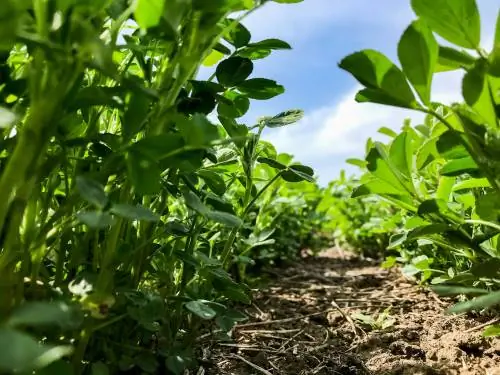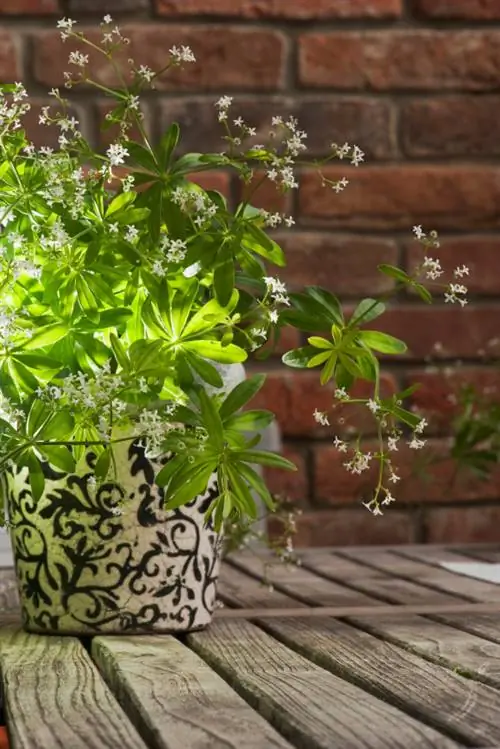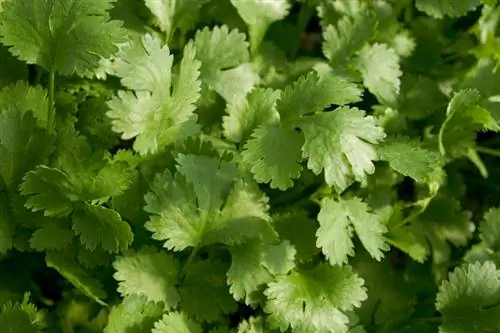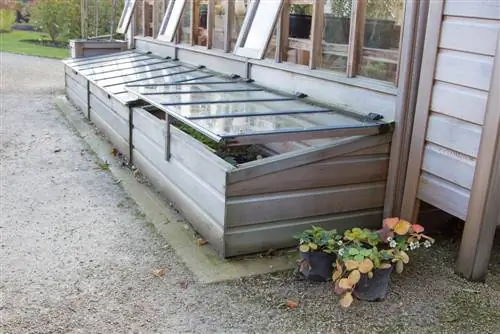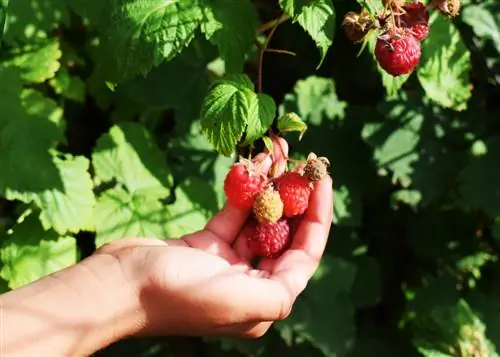- Author admin [email protected].
- Public 2023-12-16 16:46.
- Last modified 2025-01-23 11:21.
This hardy plant grows up to one meter high and transforms the bed into a sea of green. But much more important than the beautiful sight is what follows. We can derive three benefits from growing alfalfa.
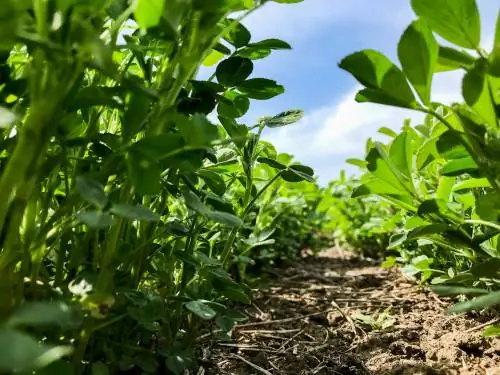
How to grow alfalfa in the garden?
To grow alfalfa successfully, sow the seeds widely from March on loosened, nitrogen-poor soil in sunny locations. Harvest up to four times a year for fodder or green manure and use tender leaves and ripe seeds in the kitchen.
When it's worth planting
If you grow alfalfa in your garden, you can expect the following gifts from:
- nitrogenous green manure
- a loosened soil
- Food for animals
Tip
Alfalfa is also edible for humans. Young leaves enrich salads, so-called alfalfa sprouts can be grown from seeds.
Location for cultivation
As green manure, you can plant this butterfly plant in areas that could benefit from replenishing the nitrogen depot. Thanks to its deep roots, even compacted soil can be loosened up again, if necessary through cultivation over several years.
If you want to grow alfalfa as food for yourself or as feed for animals, you should offer it a sunny and dry place. The soil should also be deeply loosened by digging and enriched with compost.
The ideal sowing time
If you want to harvest the alfalfa in the same year, you should sow the seeds early in the spring. This will be possible from March. With green manure, however, you can take longer. The cultivation date may be postponed until the end of August at the latest.
Seeds and sowing
If you don't have seeds yet, you can buy them cheaply in stores. The recommended seed rate is 2 grams per m².
- Spread seeds widely
- approx. Work 1 cm deep into the soil
- water thoroughly
- cover until germination (to protect against birds)
Harvesting
Harvesting is possible up to four times a year by cutting the alfalfa for fodder. If they are grown over several years, the plants should be allowed to bloom once a year.
Young, tender leaves can be picked at any time for salads, soups or sauces, while mature seeds can be harvested some time after flowering.
Use as green fertilizer
If the alfalfa is used exclusively as green manure, it is left standing over the winter. In spring, the plants are completely buried in the ground, where the stored nitrogen is released as they rot.

